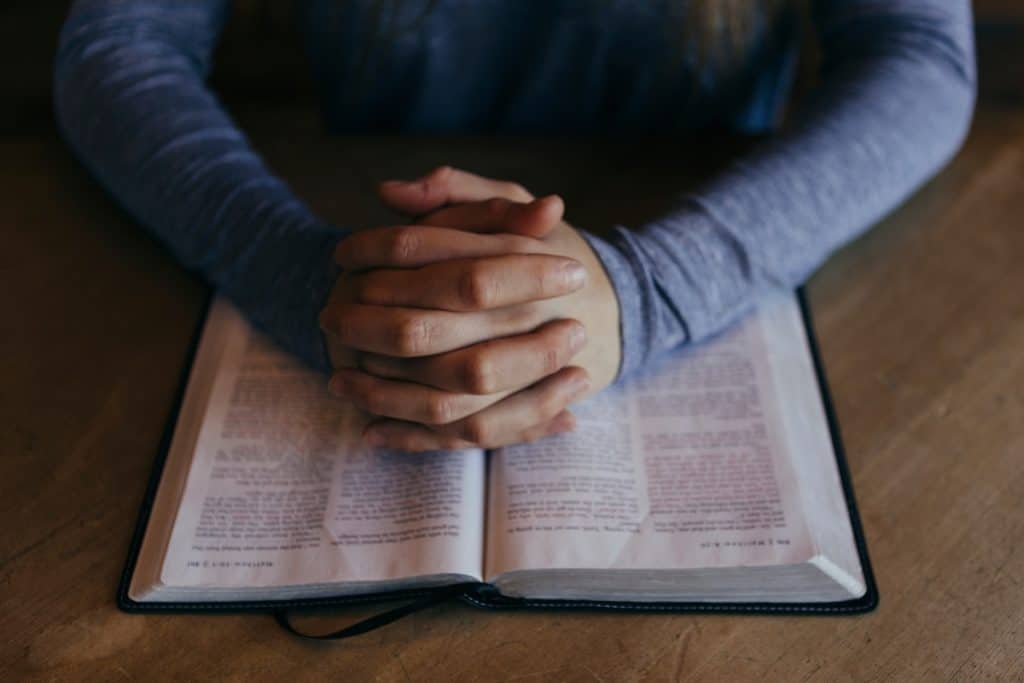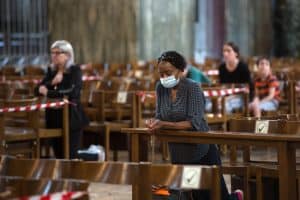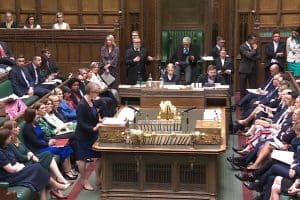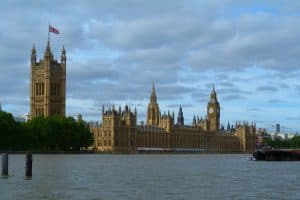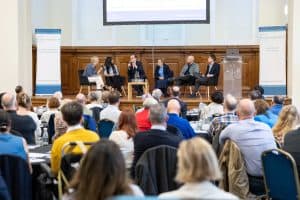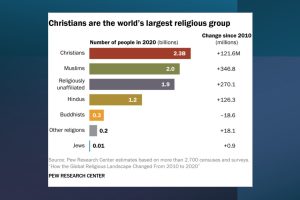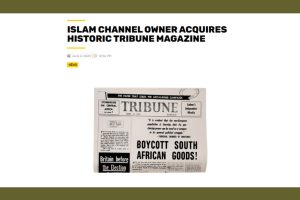By Ruth Peacock
Survivors of sex abuse in the Church of England have expressed relief over the recommendation in the Alexis Jay report into safeguarding in the church: to create a truly independent safeguarding system, governing both operations and scrutiny.
Jane Chevous, co-founder of Survivors Voices, said all the survivors she knew had longed for a completely independent process. There was a mood of celebration that the moment had finally come, but also distress that they were left waiting too long.
She told a Religion Media Centre briefing: “Survivors needed this to happen 20 years ago. Some of us have been campaigning and trying to effect change for 20 to 30 years and we are exhausted and ground down.”
Ms Chevous was speaking in a briefing on a report by Professor Jay, which recommends two new charities should be set up to deliver and scrutinise safeguarding operations. They should be funded by the church through grants, but they should be entirely separate from the church.
The report says the new structure is needed because the current safeguarding system is “flawed and cannot be sufficiently improved whilst it remains within church oversight”. It needed fundamental change to restore the confidence of victims, survivors and clergy.
The report pulls no punches in describing the current chaotic state of administration, which allows for different systems in each of the 42 dioceses. It finds inconsistent safeguarding practice across dioceses; inequity in funding and staffing for safeguarding; inconsistent (and in some cases no) data collection and analysis; loose definitions of safeguarding which meant some human resources matters were escalated wrongly, with damaging results; and a collapse of confidence in the system across the board.
The Bishop of Birkenhead, Julie Conalty, deputy lead bishop for safeguarding with a focus on survivor engagement, welcomed the report which sets out the way to go in the future, saying this was needed after the crisis of last July when the Independent Safeguarding Board collapsed in acrimony.
Bishop Conalty, a former social worker, agreed there was a problem overall, partly because the church was a complex organisation of many parts. She queried some aspects of the report’s findings, saying there was consistency on the ground for example in DBS (Disclosure and Barring Service) checks. There was, she said, a standard wider definition of safeguarding in the CofE, but this was an advantage in making churches safe.
She said the report’s finding that safeguarding was “weaponised” to address matters of conduct which had nothing to do with risks to children or vulnerable adults, was “loaded”. While she acknowledged this did happen, it was important to consider each case without a label, to see if bullying or harassment played a part.
The report was compiled after hundreds of interviews and an online survey. One response was from a diocesan registrar who described the power that bishops still had around safeguarding as “slightly horrifying”.
Bishop Conalty said power had, to some extent, already been taken away from bishops over the influence they had in case management groups. She hoped the report would lead to bishops having a responsibility to lead a positive culture in the diocese, but not overriding safeguarding professionals.
Justin Humphreys, chief executive of Thirtyone:eight, a Christian organisation championing the rights of the vulnerable, works across many denominations and Christian groups. He told the briefing he had never seen a report like this on any church before.
He thought it was sometimes unfair that the CofE came in for so much stick over safeguarding, because generally churches had the same form of mechanism to deal with safeguarding. The report laid down a challenge for all churches to look at what independence meant and how to ensure robust and consistent systems.
Mr Humpreys is on record for believing that external and truly independent scrutiny was absolutely critical: “It’s a sad fact that the Church of England has been unable to make itself accountable sufficiently. And it’s now time for that to happen in a different way,” he said.
But the million-dollar question was: would the new model proposed in the recommendations work?
Mr Humpreys was concerned that taking safeguarding out of the Church of England to an independent body would undermine the key message of the past, that safeguarding was everybody’s business, and he looked forward to more clarity on that. He wanted to emphasise that the report was critical of the structures in which staff worked, not of the people. “The vast majority of safeguarding staff within the dioceses are doing an excellent job in very, very challenging circumstances,” he said.
The report contains legal advice on how staff can transfer to the new charities, and he cautioned against massive staff upheaval, with the loss of long-term corporate memory in a turnover of staff that “has been incredible at times”.
“I think there’s something really important about maintaining what does work well and not unwittingly destroying it in the pursuit of a totally different model.”
The Rev Dr Ian Paul, a member of the Archbishops’ Council, said the reason for high turnover was that staff had been subjected to abuse and the issue had become toxic, a blame game. He thought this would continue without the proposed independent process.
He was glad the report highlighted the weaponisation of safeguarding, because, he said, that was what it felt like. Dr Paul spoke of vexatious safeguarding complaints, with consequences for livelihood, family life and home, that were sometimes handled very badly where both victims and those accused lacked confidence in the process. He was subject to such a complaint and found he was asking: “What is my life going to look like now after ministry?”
The report suggested the only way out of the blame game was to change the structure. He said one of the frustrating things about the Archbishops’ Council was that when it put in place central measures, it had no jurisdiction over the 42 dioceses, with the bishops in the dioceses “kings in their own castle”. The report was helpful in highlighting inconsistencies between dioceses: “Without some kind of more centralised system, I don’t see how we’re ever going to get away from that.”
But his main concern, which he said was shared with many people involved, was that there were no alternative models to choose from and the decision to implement this structure may be rushed. Professor Jay had been given a brief to come up with recommendations and now they were provided: “I don’t think we’ll have any choice but to implement it,” Dr Paul said.
He struck a conciliatory tone saying he wanted to find common cause on how best to implement the new structure and avoid lapsing into “us against them”. “The problem with the Independent Safeguarding Board in the first place,” he added, “was that we rushed into providing a solution without thinking through the issues, and that embedded problems. So how do we avoid doing that?”
And there is hope: “It seems to me that this report has brought that prospect of truly independent scrutiny of church safeguarding closer and although it’s been a very painful process, I for one, and I think the rest of the Archbishops’ Council, are also very pleased that we are at least one major step closer to that.”
The key takeaway for Andrew Graystone, an advocate for survivors of church abuse, is that the report recognised that the people at the centre of the church did not know how to “do safeguarding”. They were not experts, so full independence of operations and scrutiny was essential.
He analysed the three-point safeguarding problem facing the church: preventing harm; what happens when things go wrong; and the legacy of historic failures to victims of abuse. He hears from people every week with allegations of recent abuse, and he said there were 50 or 100 people whose stories needed to be addressed.
His key concern is what happens next, because he was surprised to see that a “response group” had been set up to take the implementation forward, which had many members who were involved in the collapse of the old system that gave rise to this new structure. He said it looked to him like a slap-down, a group working behind a cloak of secrecy, and had given rise to anxiety among the people he was in touch with.
Mr Graystone would like to see an independent body with expertise to oversee the implementation process, suggesting Professor Jay herself, or the lawyer who gave legal advice for her report.
Ms Chevous agreed. The response group needed to have a significant survivor voice, she said. They had expertise and they held the history of church safeguarding, not the bishops.
She raised her concern about the danger of work ceasing while the new system was brought in. There were 11 outstanding cases hanging over from a year ago. “We know we have to avoid the kind of planning blight situation where nothing happens while we’re waiting for the new thing to happen. There has to be some business as usual in transition and the transition has to be managed well.”
Bishop Conalty said the issue of the 11 outstanding cases seemed to be locked, with offers not accepted. This needed to be resolved and she wanted to continue the conversations.
Ms Chevous finally expressed disappointment that the report recommended dropping reference to spiritual abuse in guidance and training, replacing it with emotional and psychological abuse. “Some of us have worked very hard for a long time to get the understanding of spiritual abuse within faith-based safeguarding, so I hope that as the detail is further discussed, we’re able to deal properly with that issue,” she said.
Concluding, Bishop Conalty was asked why safeguarding was such a problem for the Church of England, when other public organisations such as schools and colleges had effective operations.
She said education and health sectors were way ahead of the church, which was just beginning to grapple with it. “I think there’s an arrogance, that the church is in some way above normal rules or professional guidance.
“We really need to have dialogue and attend to the gap between the external independent professional scrutiny and advice and the reality on the ground within churches in our own world, in terms of how we use scripture, our theology, our power dynamics and structures. There are some things that are unique but they do not get us out of jail free around safeguarding.”
View the briefing on our YouTube channel here

